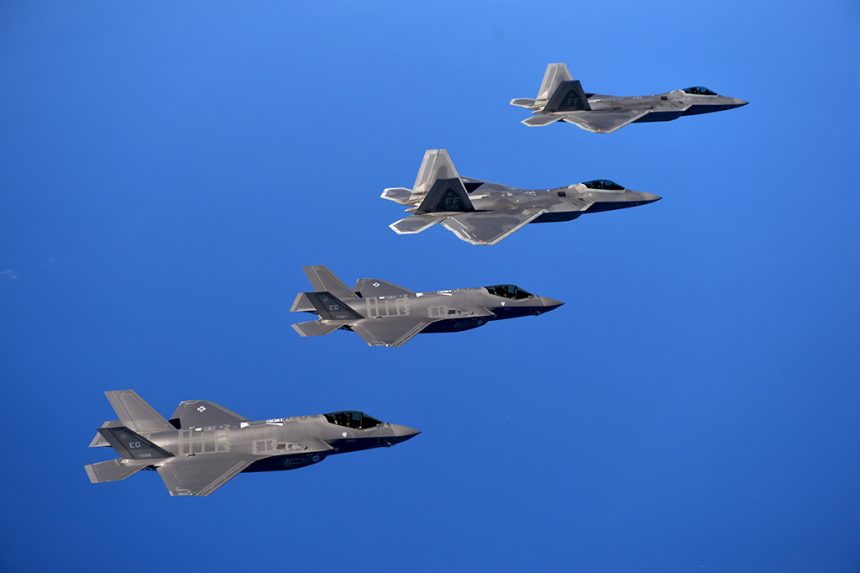U.S. Air Force is starting to integrate its F-35s and F-22s to improve fifth-generation tactics.
Four F-22 Raptors belonging to the the 94th Fighter Squadron, from Joint Base Langley-Eustis, Virginia, deployed to Eglin Air Force Base, Florida to conduct joint training with the local-based F-35A Lightning IIs from the 58th Fighter Squadron.
The joint training was aimed at improving integration between the two most advanced radar-evading planes in service with the U.S. Air Force: flying mixed formations, the F-22s and F-35s flew OCA (offensive counter air), DCA (defensive counter air) and interdiction missions, maximizing the capabilities provided by operating two fifth-generation platforms together.
“The missions started with basic air-to-air and surface attacks,” said Maj. Steven Frodsham, F-22 pilot and 149th Fighter Squadron, Virginia Air National Guard in an Air Force press release. “As the training progressed, the missions developed into more advanced escort and defensive counter air fifth-generation integration missions.”
Fifth-generation capabilities had their combat debut with the F-22 in the air-to-ground role during the early stages of Operation Inherent Resolve, against ISIS targets in Iraq and Syria. The successful baptism of fire reaffirmed the pivotal role played by stealth technologies and sensor fusion capabilities, brought together by 5th Gen. warplanes, in current scenarios.
Earlier this year Chief of U.S. Air Force Air Combat Command Gen. Michael Hostage said the F-35 is what USAF needs to keep up with the adversaries but the F-22 Raptor will have to support the Joint Strike Fighter even though its service life extension and modernisation plan will cost a lot. Because, as he explained: “If I do not keep that F-22 fleet viable, the F-35 fleet frankly will be irrelevant. The F-35 is not built as an air superiority platform. It needs the F-22.”
That’s why the U.S. Air Force has already started to team Joint Strike Fighters with Raptors.
Image credit: U.S. Air Force
















